Why shouldn't dogs be given pork?
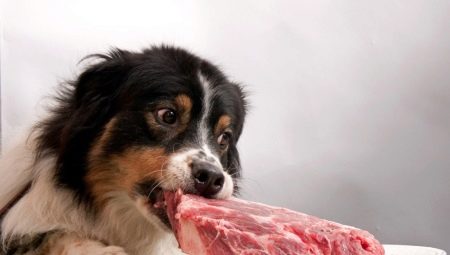
When we start a pet, we often automatically transfer it to the status of a family member, therefore, for convenience, its diet becomes similar to that of a person.
According to the statistics of the "Expert and Analytical Center for Agribusiness", the world production of different types of meat is in the following ratio (in decreasing order):
- hen;
- pork;
- beef;
- lamb and goat meat;
- other meat.
There are many myths and a bunch of prohibitions around the first two. And if with chicken meat the fears and prohibitions of veterinarians are clear - this is both the danger of sharp tubular chicken bones for the dog's intestines and the high probability of allergic reactions, then with pork not everything and not everyone understands.
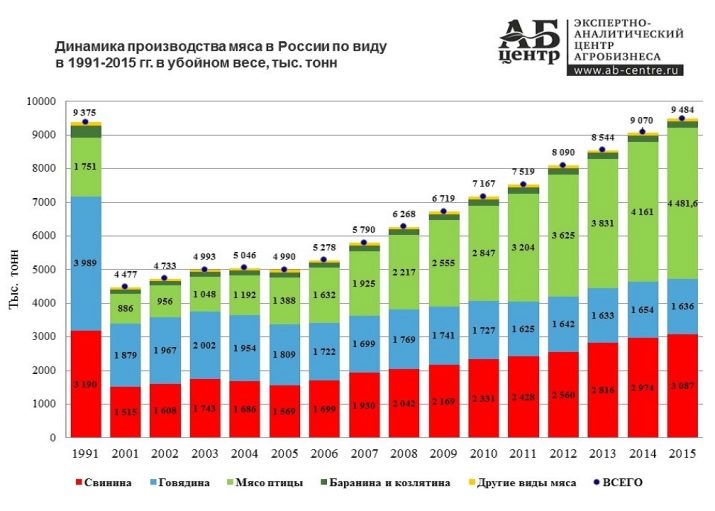
Pork Eating Myths
- Pork meat is poorly absorbed by the body of dogs... The assimilation of this type of meat is actually better than chicken, duck, rabbit and beef. Better than pork canine digestive tract, only mutton is assimilated.
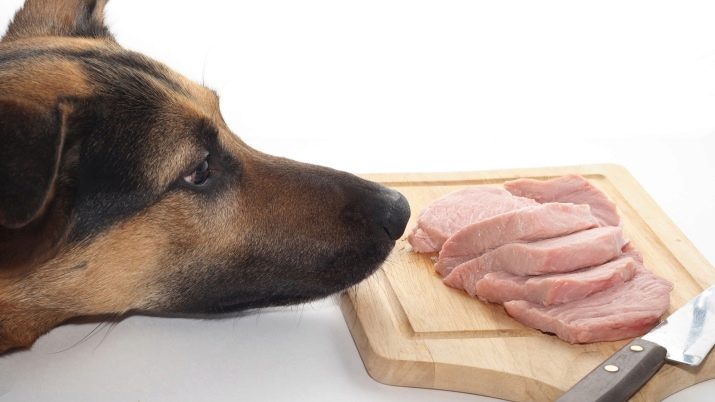
- The pork is fat. The body of any living creature needs proteins, fats, carbohydrates. But since fat is unevenly distributed in the body of any animal, theoretically in any meat there are more fatty areas. As for pork, it is recommended to give animals meat containing no more than 60% fat, this also applies to other types. To avoid digestive upset in dogs with sensitive intestines, choose leaner cuts when purchasing pork meat.
A scapula or tenderloin is suitable for a dog's diet. It is not recommended to use pork in the menu of puppies, as protein and fat are contained in it in the wrong ratio (in 100 grams of meat, on average, 17 grams of protein and 20 grams of fat). Pork liver is suitable for babies, in which there are 3.8 grams of protein per 100 grams of the product.
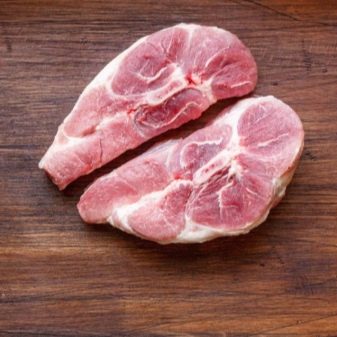
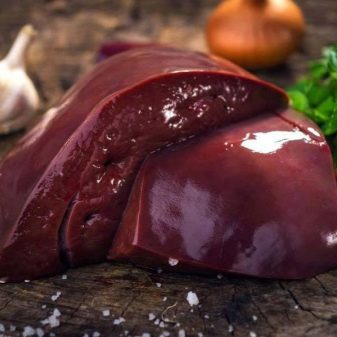
- Feeding your dog pork will inevitably lead to obesity.... An important argument, but, according to scientists, it has no basis, since the main principle of dog nutrition is balance. Some pet food manufacturers such as Royal canin, Grandin include small amounts of pork in their products for flavoring variety, and holistic food manufacturer Akana has a line of lean pork and pumpkin. And if we look at the composition of these feeds, they are all balanced in terms of the ratio of proteins, fats and carbohydrates, despite the fact that they contain pork meat.
Diversify your four-legged friend's diet by feeding several different types of protein throughout the week. If you plan to include pork in the dog's diet, then do it no more than once a week.
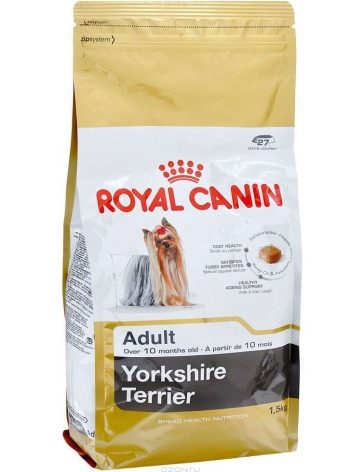
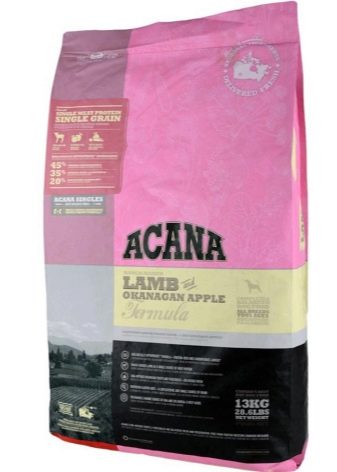
- Pork increases the risk of bloat. The main cause of this particularly dangerous disease in dogs is overeating or exertion immediately after eating. And here the recommendation of working and active dogs to feed fractionally is rather appropriate, and pork has nothing to do with it.
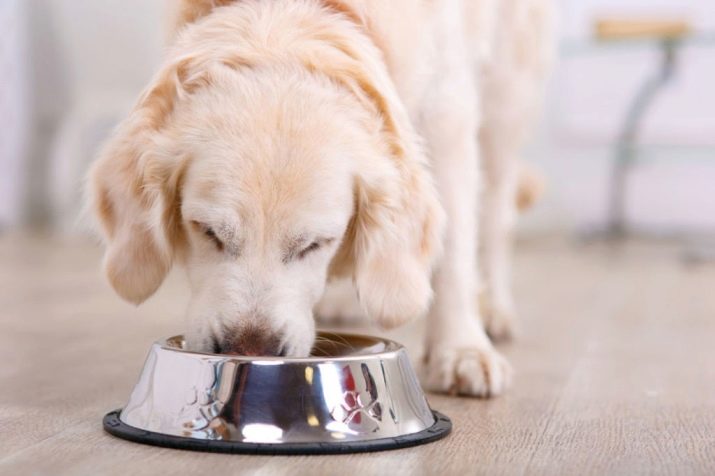
- Raw pork is healthier. Many well-meaning owners feed their pets with raw meat, believing that it is healthier. Do not give raw food to a dog, as unprocessed meat can contain a lot of infections and parasites, which are equally dangerous for a dog and a pig.
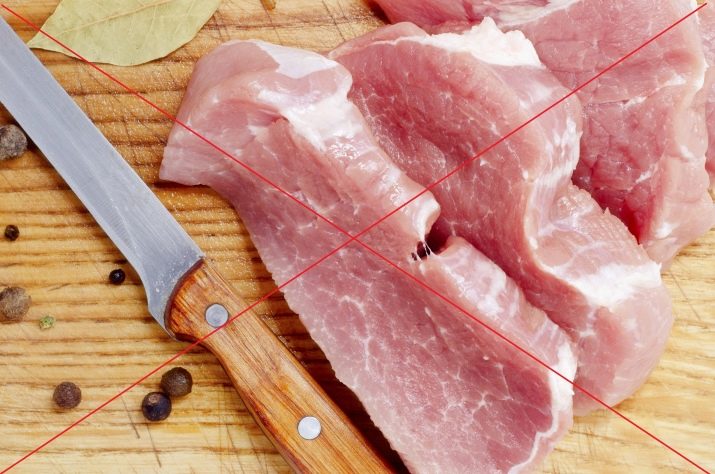
- Pork increases blood cholesterol levels... An increase in dog's blood cholesterol is theoretically present, although research in this direction has only been carried out in humans. In theory, not only pork, but other fat-rich foods can raise cholesterol levels as well.
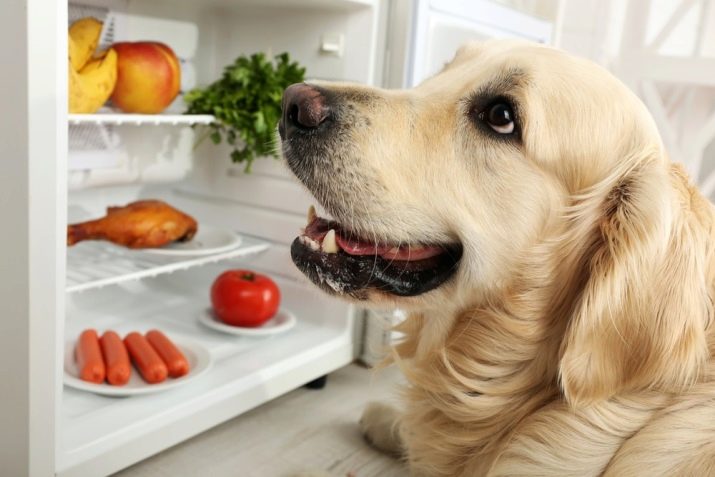
Is there a benefit?
Like any other product, pork has positive properties, and there are not so few of them. Lean pork contains a large amount of protein (20 g per 100 g of meat). It is also rich in B vitamins, minerals - phosphorus, magnesium, copper and zinc and others. Pork offal is also of particular value. The liver contains vitamin B 12, the heart is rich in potassium and iodine.
In addition, a large amount of fatty acids and fats acts as a means of preventing skin and coat diseases. Lean pork can be given occasionally to outdoor kennel dogs in winter.
Due to its high calorie content, this type of meat helps the dog to keep warm.
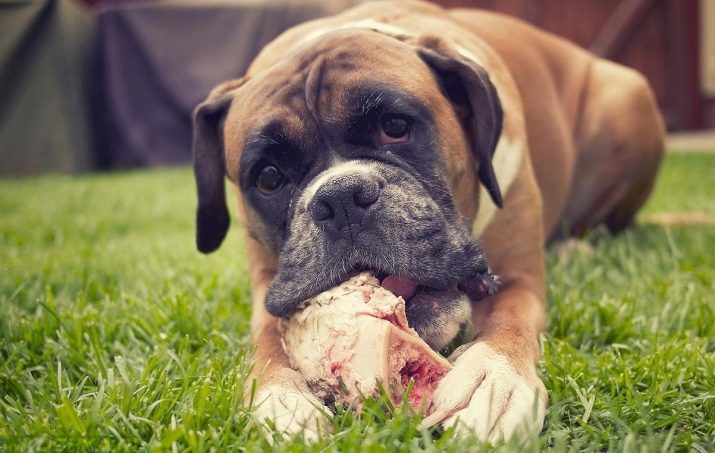
Why is it dangerous?
But all the positive aspects of pork meat end there. And the main reason for this is parasitic and infectious diseases that dogs can get sick with when eating meat that has not been tested and not properly processed. Here is some of them.
- Nematodes. The parasite lives in the small intestine of a dog. The life of the parasite is 4-6 months. The female lays about 200,000 eggs per day, seeding the environment. After the pet eats meat, the egg of the parasite enters the intestines. A larva emerges from it, which, penetrating through the walls of the intestine, goes through the small circle of blood circulation to the lungs, causing inflammation and coughing there. Together with sputum, it goes into the oral cavity and enters the stomach and intestines.
Parasites constantly injure the gastrointestinal tract and alveoli of the lungs, causing anemia and decreased immunity, pathogenic microbes can complicate this process. A high concentration of parasites can cause intestinal blockage.
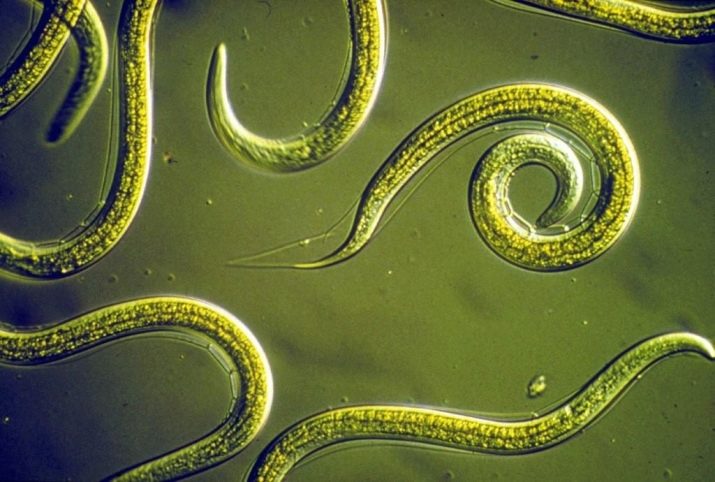
- Trematodes (Pork tapeworm). The tapeworm lives in the small intestine. Its body length can reach 1.5-2 meters. With its head, it attaches to the intestinal wall. Segments containing helminth eggs grow from it. There can be up to 1000 pieces. The parasite, releasing waste products, can have a toxic-allergic effect on the animal's body. In addition, it can cause digestive upsets such as nausea, vomiting and sometimes diarrhea and abdominal pain.
The parasite absorbs nutrients from the intestinal lumen.The animal is constantly showing anxiety, losing weight. The disease can lead to hypochromic anemia.
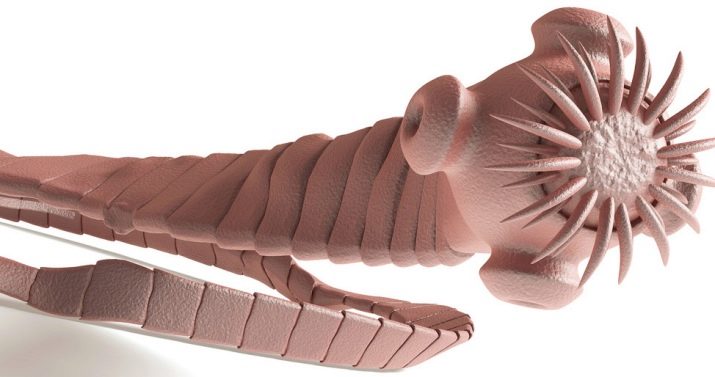
- Trichinosis. The dog can be both the intermediate and the final host of the parasite. Once in the small intestine, the female and the male of the parasite mate, after which the males die, and the females secrete up to 10,000 larvae, which are carried throughout the body with blood flow, mainly localizing in the muscles. The first clinical signs of infection can appear after 3 days. The dog has a fever, diarrhea. The animal is losing weight dramatically. When localized in muscles, the parasite causes an inflammatory process in them, accompanied by pain, which causes impaired coordination of movement and tremors.
The cardiovascular system is also affected and the body as a whole suffers.
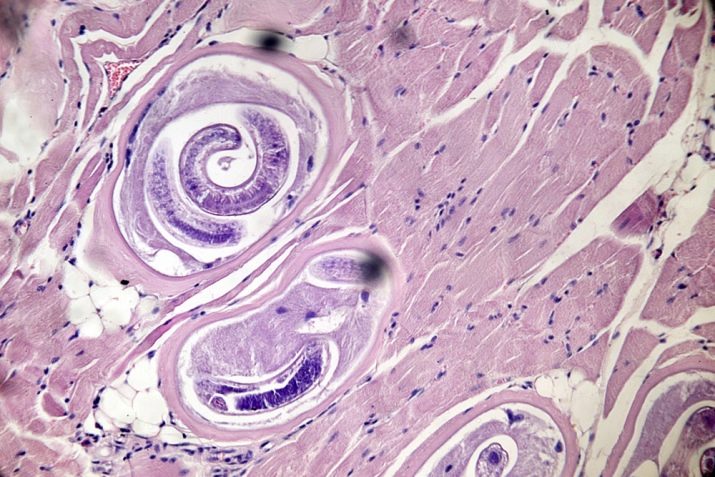
- Aujeszky's disease or pseudo-rabies... An animal is infected by contact with a sick animal or by eating affected raw meat. The disease proceeds with lightning speed - in 1-2 days, and in almost 100% of cases it is fatal. Symptoms: itching in the head area and profuse salivation, which, however, are similar to signs of rabies.
As you can see from the above, negative points prevail over positive ones. And since all of these diseases can be transmitted to humans, veterinarians prohibit the use of pork in the diet of dogs.

How to give meat correctly?
In order for the pork in the dog's diet not to entail negative consequences, the animal must be properly fed. Composing a pet's diet is a very responsible task, especially if you nevertheless decide to include this type of meat in the diet.
- Never feed wild meat to animals.
- Purchase a product that has passed a veterinary and sanitary examination.
- Give your dog only boiled meat. At a temperature of 90-100 degrees, all pathogenic microbes and microorganisms in it die within a few minutes. It is forbidden to use fried meat. The danger in this lies not in the meat itself, but in the vegetable oil on which the frying process is carried out. Deep freezing pork does not kill all bacteria and helminths in it.
- Choose lean pieces for your pet and do not forget that offal (pork liver, heart, spleen, lungs, etc.) will bring great benefits to the four-legged.
- Do not use pork in your diet on a regular basis to avoid damaging your pet's health. It will be enough to include it in the diet once a week.
- If this is your first time giving a dog pork or offal, be attentive to the condition of the animal. At the slightest sign of intolerance, replace it with another type of protein.
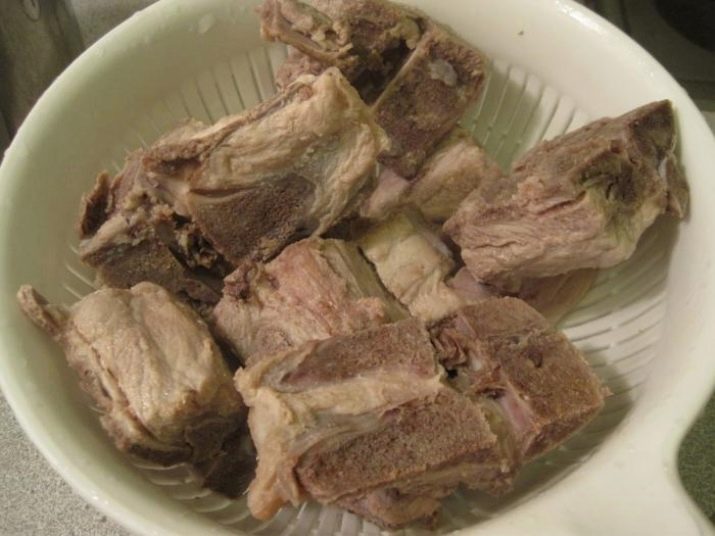
If these requirements seem complicated to you, and your pet likes pork meat, you can use feed based on this type of meat.
Many European and Canadian manufacturers use meat suitable for human consumption in the manufacture of feed. The special processing technology of the feed during the extrusion process kills the possible disease-causing agent, making the feed safe for your pet.
Whether to introduce pork into the dog's diet is the owner's decision.... It is important to comply with all of the above requirements, then your pet will not have health problems.
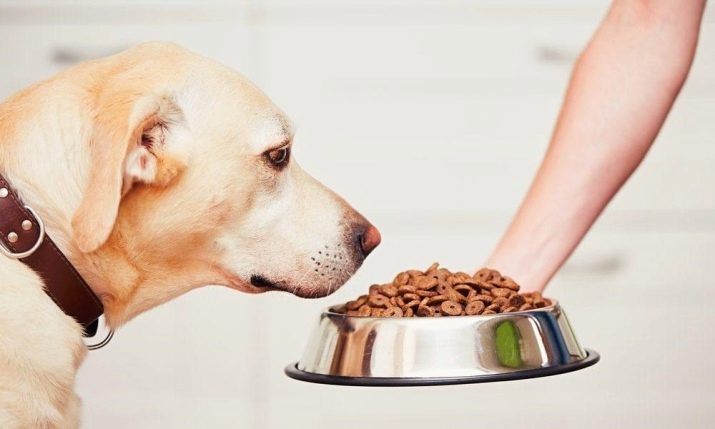
See the next video for why a dog shouldn't be given pork.






































